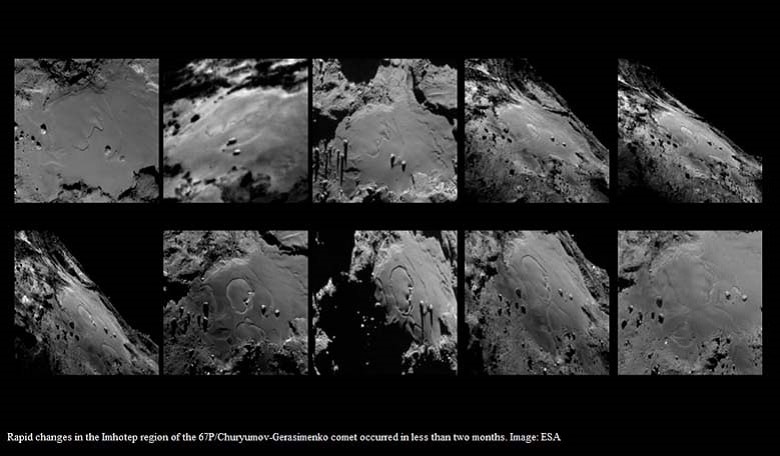We all knew that life on a comet would constitute a pretty wild ride, didn’t we?
Well, we didn’t as much “know” as speculate, before the European Space Agency’s historic Rosetta mission and comet landing, that is. Now we have facts to back this up.
As ESA’s Rosetta has beautifully captured yet again, things change rapidly on a comet. Dramatic changes on the surface of what is known as the Imhotep region (named after the Egyptian polymath and high priest of the sun god Ra) of comet 67P/Churyumov-Gerasimenko were recently recorded by Rosetta.
New features were expanding “by a few tens of centimetres per hour,” according to astronomer Olivier Groussin. That is an astoundingly fast rate.
We don’t yet know about the specific process that’s wreaking all of this havoc in the Imhotep region. It could be anything from crystallisation of amorphous ice to destabilisation of particular molecules.
What we do know is that such extreme, rapid changes were not originally predicted by computer models as the comet approached perihelion (the point in its orbit when its closest to the sun). Whatever forces are at work on 67P/Churyumov-Gerasimenko – we must still find out more about their exact nature.











